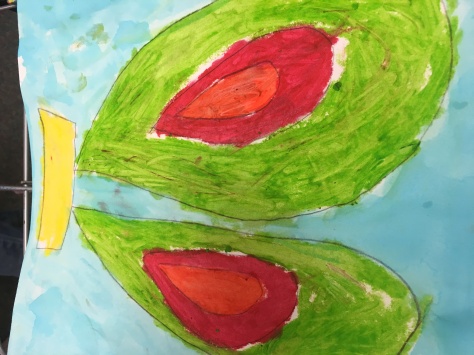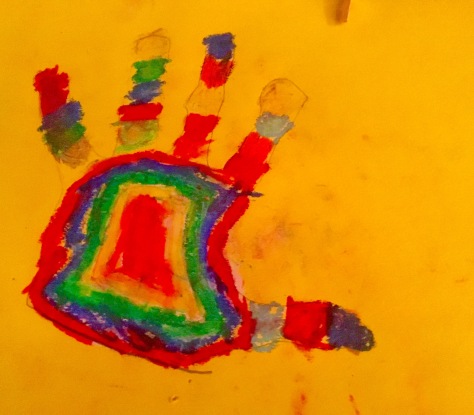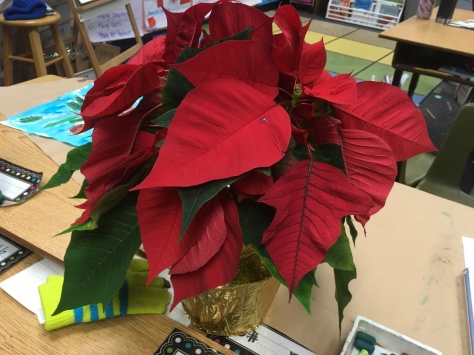 December’s Art project with Kindergarten and 2nd Grade was a still life Poinsettia using oil pastel. The Kindergarteners had only used chalk pastel up until now, so our first lesson introduced them to oil pastel techniques.
December’s Art project with Kindergarten and 2nd Grade was a still life Poinsettia using oil pastel. The Kindergarteners had only used chalk pastel up until now, so our first lesson introduced them to oil pastel techniques.
The children were given a selection of oil pastels and a piece of paper and asked to try them out and think about how they might be different to the chalk pastels we used in the previous session.
Here are some of their observations.
The colours are brighter and you can press harder.
When you press hard it gets softer and easier to mix
They are like crayons
It didn’t blend across the colours like the chalk pastels but it worked when you put one colour on top of another.
You can blend chalk pastel with your finger. You can still blend with oil pastel but it is harder.
I can add white to blue to make light blue.
I showed them how to blend the pastels using baby oil and a Q-tip/cotton bud. the children practised making pictures using the blending technique.
I can colour just a little bit with oil pastel and then use the oil on my Q tip to fill in the rest – it makes a lighter color.
It looks like paint when we add oil to the pastels, it makes it smoother
You can use the Q tip like a paint brush
If you use too much oil it rubs the color away. You need just a little bit to blend.
I gave them another piece of paper and they drew around their hand using pencil. They then coloured the hand in stripes using the oil pastels. The colours were blended using oil. We painted the background with liquid water-colour. They thought it was very cool that the pastels repelled the paint.

Still Life

For the follow-up session and with the 2nd Graders who are familiar with oil pastels, I chose a still life drawing of a Poinsettia. The Kindergartners haven’t followed a project inspired by an artist, so I asked for suggestions of still life oil pastel artists on a Reggio-inspired Facebook group. After a bit of research, I decided upon Georgia O’Keefe. I liked the way that O’Keefe draws flowers but doesn’t always focus on the whole plant. I felt that if we looked at examples of her work as inspiration, the children could choose to zoom in on one part of the flower,if they didn’t feel confident enough to tackle the whole thing.
I limited the oil pastel colours to shades of red and green, black for shade and yellow and white for highlights. The children drew the picture with the pastels and then blended using oil. The final touch was painting the background with liquid watercolour.
Since the children hadn’t done anything like this before, I was aware that they may find it challenging. To start the lesson we read ‘Ish’ by Peter Reynolds. This is the story of a boy who gives up drawing in frustration because his pictures do not look like the real thing. His sister persuades him to look at his pictures in a new light, as tree-ish, afternoon-ish and vase-ish . I wanted the children to understand that this was not an exercise in replicating exactly the plant in front of them because each of us view it differently. My aim was for the children to study the plant and replicate it in their own way. I think we achieved that aim perfectly.
Kindergarten Class
Interestingly the Kindergartners were less anxious about the task than the 2nd graders, who found it hard to decide which part to draw and spent a lot of time considering how to make the shapes. A few children needed a lot of encouragement and support to make their own marks on the paper.
2nd Grade Class
I love how different they all are. The Kindergartners really focused on the shapes of the leaves and the 2nd graders paid more attention to the details in the leaves and petals and were more abstract with their use of colour. I’m really impressed with the finished results and it was a really valuable exercise to see how differently we all see things.





































